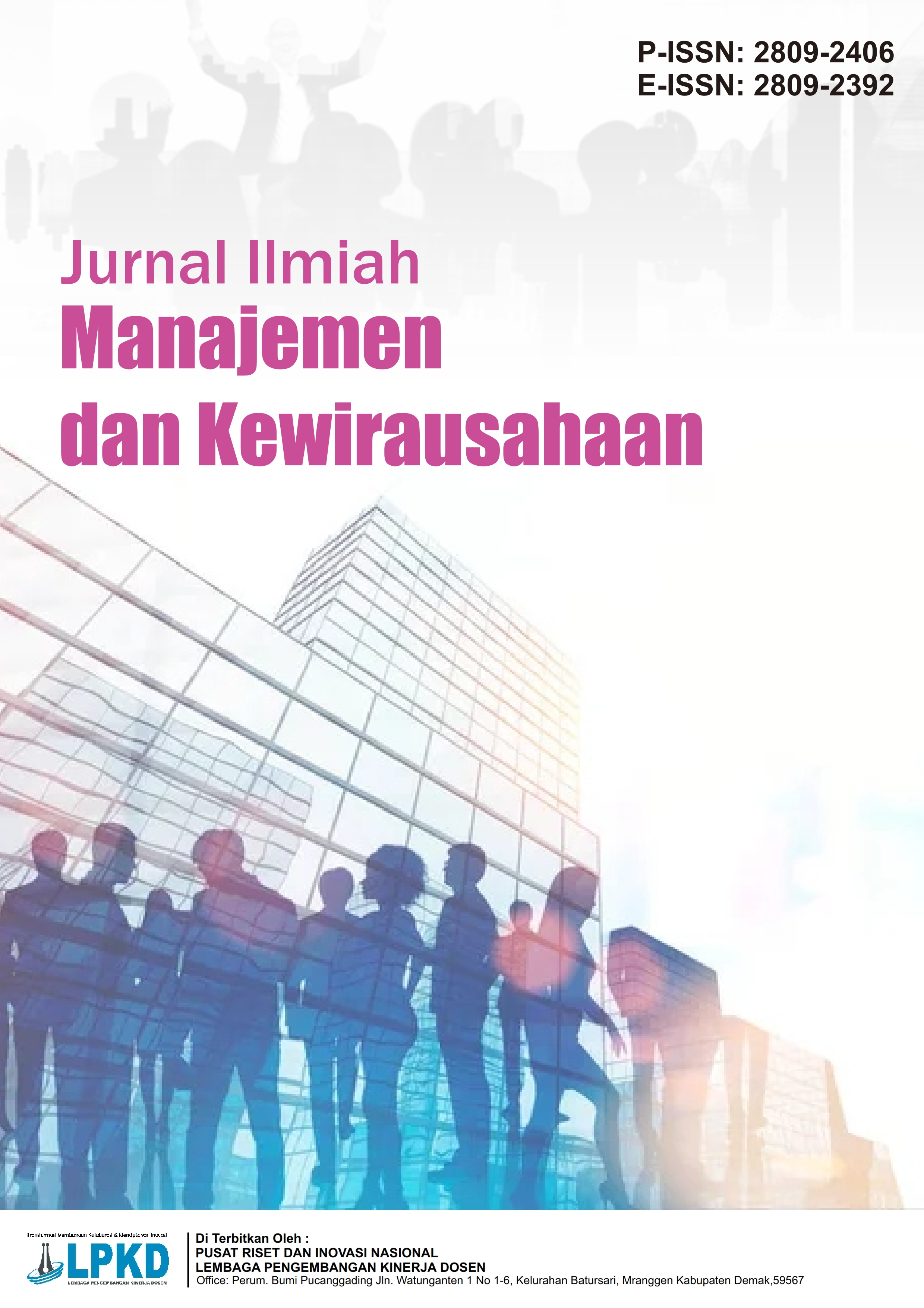Analisa Risiko Kecelakaan Kerja di Departemen Logistik pada PT. Huayue Nickel Cobalt dengan Menggunakan Metode Hirarki Pengendalian Resiko dan HIRADC
DOI:
https://doi.org/10.55606/jimak.v4i2.4160Keywords:
HIRADC Method, High Pressure Acid Leaching Technology, Risk ControlAbstract
PT. Huayue Nickel Cobalt (called hync) is a joint venture between Zhejiang Huayou Cobalt Co., Ltd. And China Molybdenum Co., Ltd. As well as Tshingshan Stainless Steel in October 2018, the business range includes resource development, a nickel-cobalt metal extraction, and an integrated to completed product processing. The project adopts third-generation High Pressure Acid Leaching (HPAL) technology, one of the most sophisticated nickel processing technologies in the world. This technology enabled the maximum use of all the components of precious metals in the laterite nickel ore. This can thus extract nickel, cobalt, and manganese both simultaneously and integrated into the production of fresh energy batteries. HIRADC plays a crucial role in the K3 management system because it serves as a cornerstone of prevention and risk control efforts. Its application helps companies in determining effective safety and occupational strategies and strategies. PT Huayue Nickel Cobalt has its own problems with implementation, and there are several obstacles, such as a lack of employee awareness of safety procedures, a standard operational breach. This problem can affect company productivity and employee welfare, so further effort is needed to improve the works surveillance and safety training systems. The application of HIRADC assists in the creation of risk-control strategies for risk-control methods is proven to be effective in providing structured guidance for risk assessment, from danger identification, risk assessment, to appropriate control recommendations. This analysis can provide a basis for management decision making.
References
Aeni, H. F., & Sriagustini, I. (2014). Dasar keselamatan dan kesehatan kerja (K3). Alfabeta.
BSI Group. (2007). Occupational health and safety management systems—Requirements (OHSAS 18001). BSI Group.
Gunningham, N. (2008). Occupational health and safety, worker participation and the mining industry in Australia. Industrial Relations Journal, 39(3), 176–192.
International Labour Organization (ILO). (2018). Safety and health at work: A vision for sus-tainable prevention. ILO.
International Labour Organization (ILO). (2019). Workplace safety and health statistics: Global trends. ILO.
Jamsostek. (2013). Laporan statistik kecelakaan kerja tahun 2012. PT Jamsostek.
Kementerian Ketenagakerjaan Republik Indonesia. (2012). Peraturan Pemerintah No. 50 Tahun 2012 tentang penerapan sistem keselamatan dan kesehatan kerja (SMK3). Kemnaker RI.
Manuele, F. A. (2008). Advanced safety management: Focusing on Z10 and serious injury prevention. John Wiley & Sons, Inc.
Prakoso, G. (2019). Penerapan HIRADC di sektor logistik untuk mengurangi kecelakaan kerja [Skripsi, Universitas Islam Indonesia].
PT. Huayue Nickel Cobalt. (2022). Laporan kinerja keselamatan dan kesehatan kerja tahun 2022.
Ramli, S. (2010). Sistem manajemen keselamatan dan kesehatan kerja. Jakarta: Dian Rakyat.
Rohmah, M., Setyawan, E., & Kusuma, H. (2023). Analisis penerapan HIRADC pada proyek konstruksi di Universitas Negeri Malang. Jurnal Keselamatan dan Kesehatan Kerja, 8(2), 112–125.
Santoso, G. (2004). Manajemen keselamatan dan kesehatan kerja. Erlangga.
Suardi, R. (2007). Sistem manajemen keselamatan dan kesehatan kerja: Panduan penerapan berdasarkan OHSAS 18001 dan Permenaker 05/1996. Gramedia Pustaka Utama.
Supriyadi, H. (2020). Efektivitas hirarki pengendalian risiko dalam menurunkan tingkat ke-celakaan kerja di industri manufaktur. Jurnal Teknik Industri, 15(1), 45–60.
Yulianto, W. H., & Nurcahyo, R. J. (2020). Hygiene, sanitasi, dan K3. Pustaka Baru Press.
Downloads
Published
How to Cite
Issue
Section
License
Copyright (c) 2025 Jurnal Ilmiah Manajemen dan Kewirausahaan

This work is licensed under a Creative Commons Attribution-NonCommercial-ShareAlike 4.0 International License.







